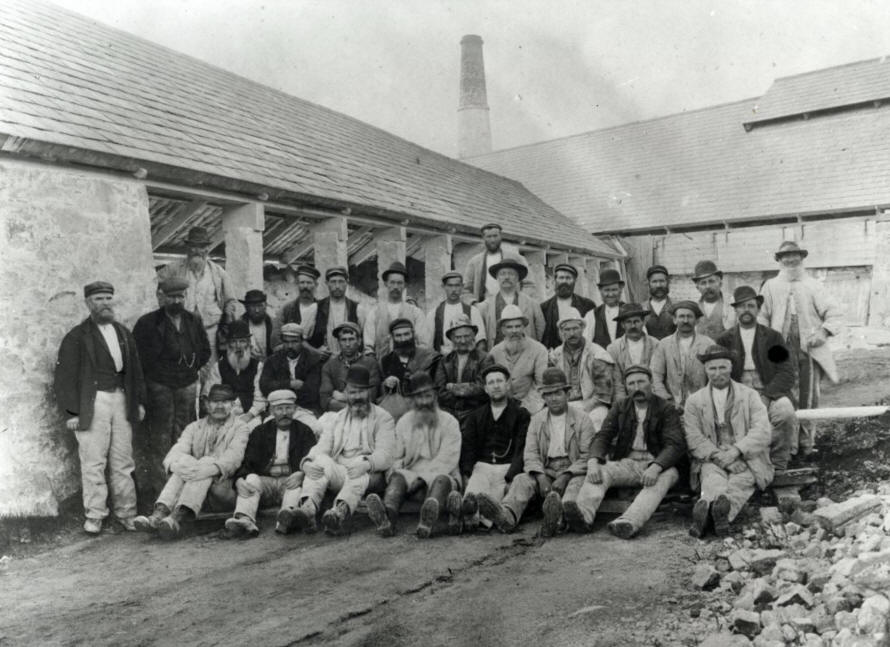It was started by Elias Martyn on the
Carthew Estate, bought by his father Richard in
1790. Elias became one of the major clay producers
in Cornwall. By the 1840s he operated 5 pits and by
1869 was producing 2000 tons of clay a year at Wheal
Martyn.
In the 1880s John Lovering took on
the lease at Wheal Martyn. The pit worked until the
effects of poor trade forced its closure in 1931.
The Dry continued to operate until 1969, working
lower grade clay from pits further up the valley.
Wheal Martyn Pit reopened in 1971 and continues to
be worked today by Imerys Minerals Ltd.
In 1974 The Wheal Martyn Trust was
established as a charity by English China Clays, who
set up a museum in 26 acres of grounds alongside the
St Austell river. As well as the historic
buildings, the museum owns and looks after a large
collection of items associated with the china clay
industry. In 2001 China Clay History Society, which
now has over 240 members was set up to manage this
large archive.
In late 2015 Wheal Martyn was awarded
development funding from the Heritage Lottery Fund,
along with funding from Arts Council England, and
Imerys Minerals Ltd, to develop the 'Clay Works!
Project’. This project will preserve the disused
Mica Dry building and open it to the public for the
first time. It will create a new exhibition and
learning space and will connect different levels of
the museum whilst providing access to an outdoor
learning area in the former settling tanks.
As with many china clay works, Wheal
Martyn was built on a hillside to help the clay
slurry move around by gravity. However, some
settling pits here were located above the mica drags
and needed to be filled with clay slurry by a pump.
In about 1902 John Lovering, an inventive clay
producer who introduced many new ideas to Wheal
Martyn, built the 18ft overshot waterwheel and
slurry pump to fill the pits. The clay slurry was
lifted by a piston fitted with a valve which worked
inside a cast iron pipe, lifting about 26 gallons
(120 litres) per stroke. The slurry pump, which is
operated by the waterwheel, via an extensive set of
flat rods, is the only surviving pump of its type
out of an estimated 200 which were once in existence
throughout the clay industry in Cornwall.
Ongoing work at the museum will
include refurbishment of this waterwheel (below
left) at an estimated cost of £32,000, with the
major cost being the European oak. (Editor: I
assume the oak is for the overhead launder and the
balance box for the flat rod system, as the wheel is
clearly metal.)
Apart from a spectacular view (below
right) down into the Wheal Martyn clay pit, which is
still in operation, the site includes a preserved
Victorian clay works, and woodland walks.
It is well worth a visit.




